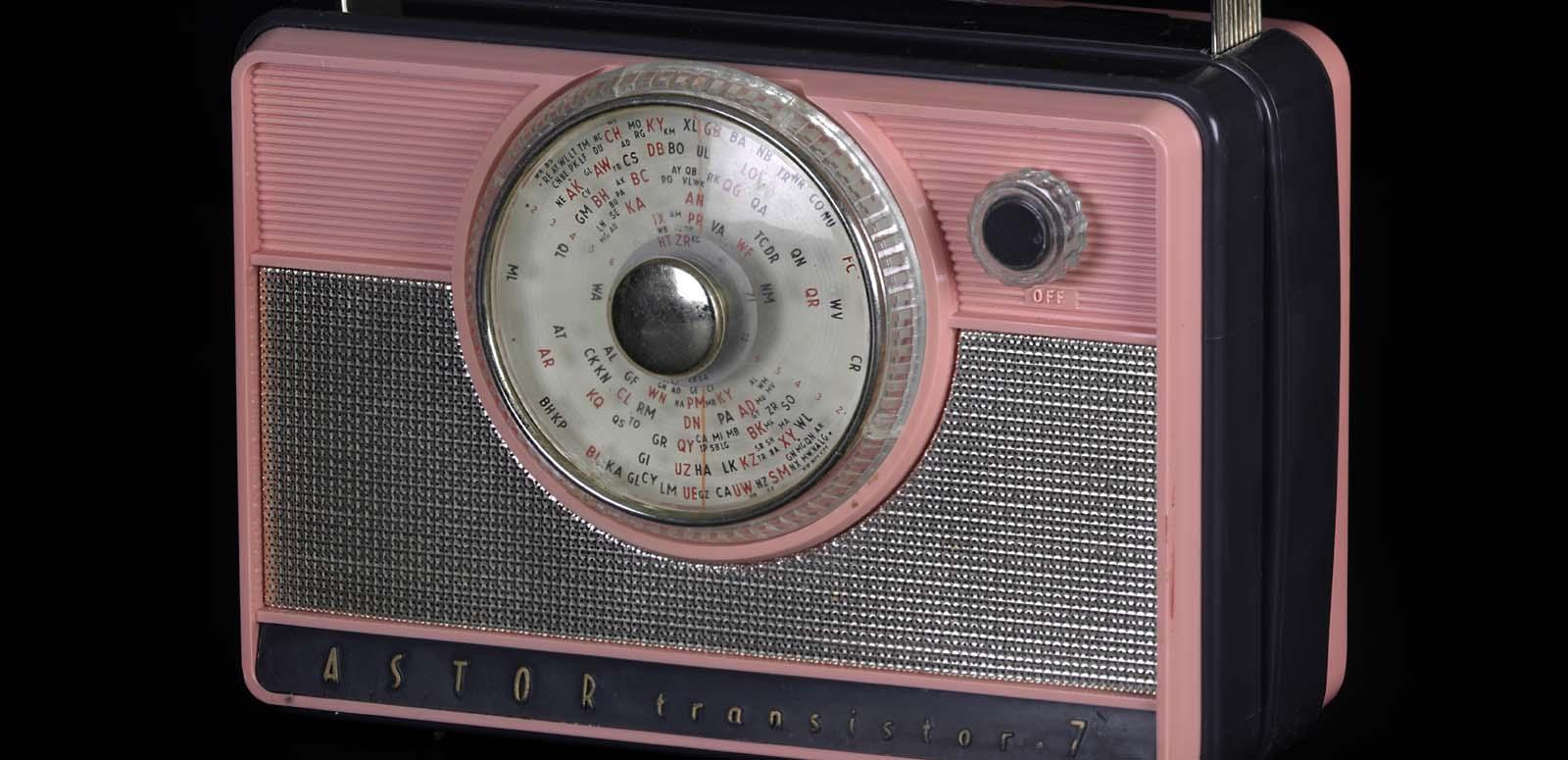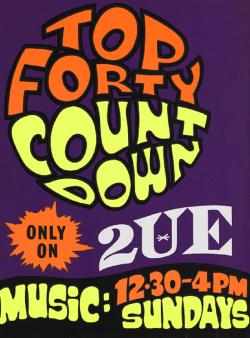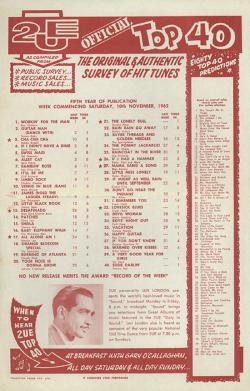From 1958, the Top 40 pop chart helped bring the golden age of radio to a close and kickstarted a new era.

From 1958, the Top 40 pop chart helped bring the golden age of radio to a close and kickstarted a new era.

In 1958, the ‘golden age of radio’ ended and a new era began.
Sydney radio station 2UE made a risky move that paid off immensely – not only boosting their sagging ratings, but shaking the foundations of radio and sending reverberations through the rest of the country that are still being felt today.
Top 40 radio began on Sunday 2 March 1958 when 2UE began playing and promoting the format as a daily feature, accompanied by the issuing of a weekly chart. John Laws, Bob Rogers, Gary O’Callaghan and Russ Walkington were among the new line-up of presenters.
Bob Rogers recalls his early days as a Top 40 DJ at 2UE in 1958 alongside John Laws and Tony Withers in this extract from his oral history interview:
Bob Rogers interviewed by Debbie Kruger, 2011. Excerpt from oral history. NFSA title: 1051940
The music charts were devised by stations contacting selected record stores in their area and tabulating their sales figures. Music programs and disc jockeys (DJs) were not new to radio – hit parades and similar music shows had been popular before – but this marked the beginnings of contemporary music being played around the clock.
In this clip, John Laws closes his 2SM music program Sound in 1958:
John Laws closes his 2SM music program, ‘Sound', 1958. NFSA title: 194671
Stewart Lamb, owner of 2UE, had visited the United States in early 1957 and saw first-hand the popularity of the Top 40 format on American radio. The idea had come from the rise of jukebox culture, and from loosening restrictions for playing music on air – prior to this, record labels feared that radio play would lead to a loss of sales. Upon his return to Australia, Lamb and 2UE’s general manager, Alan Faulkner, moved 2UE more and more in the direction of music programming.
Des Foster, assistant general manager at 2UE during the introduction of Top 40, describes the accelerating impact of television on the radio industry and radio's subsequent reinvention in this extract from his oral history interview:
Desmond Foster interviewed by Phil Charley, 1995. Excerpt from oral history. NFSA title: 294424

There were many compounding factors that led to the format’s immediate success and take-up by other stations across Australia.
The introduction of television to Australia in 1956 meant that many serials and quiz shows, a mainstay of radio at the time, could now be seen ‘with pictures’ in the home, so radio audiences were dwindling.
Postwar prosperity, the advent of rock’n’roll, advances in recording formats and transistor radios led to an expanding popular music audience, hungry for the latest singles (mostly from the United States – the first Australian Top 40 chart featured no Australian artists). The new format was also a breeding ground for young Australian artists and the eventual pop music boom of the 1960s.
Most saw the new format as a necessary change for radio – John Laws described it as the ‘music boom that had to happen’ – although it required many stations to abandon their traditional audiences, and the change was not without detractors. After 2UE introduced the Top 40 format, rival Sydney station 2GB did the same in order to keep up in the ratings.
Ben Coombes, Macquarie Network executive at the time, said of the change, 'Myself and Bert Button, who was manager at 2GB, all thought this was crazy. It didn't appeal at all to 2GB's traditional audience, which was a middle class, middle-aged group … I was so disappointed.'
Des Foster, also at 2GB at the time, stated '2GB still had a very large pool of loyal listeners, mainly older people who were resistant to change. So really whatever we might have gained on the one hand with programming more oriented to the television age, we lost on the other as we alienated those older audiences.'
In this clip from his oral history interview, Henry Gay, former program director at Melbourne's 3UZ, describes the rapid take-up of the Top 40 format across the country and how it was implemented at 3UZ:
Henry Gay interviewed by Chris Arneil, 2017. Excerpt from oral history. NFSA title: 1511974.
The new format spread and eventually led to the end of an era for radio serials, quiz shows and variety shows on Australian radio – the end of the golden age of radio. The week The Beatles arrived in Australia in June 1964 was the same week that radio serials largely ceased being heard on Sydney's metro commercial radio stations.
Richard Lane, then-President of the Australian Radio, Television and Screenwriters' Guild, wrote to The Sydney Morning Herald the next week: 'Daytime listeners in Sydney now have no alternative to the pattern of latest hits and news. May one consider the far-reaching economic aspects of this? Unless steps are taken, a death-blow well may have been dealt to a whole industry, involving many hundreds of people.'
The format still persists today, both in the contemporary hit radio format heard across many Australian commercial stations, and syndicated top 40 music programs.
This article was first published in 2018. The text was updated in 2023.
Want to be the first to hear stories and news from the NFSA?
Subscribe to our newsletter and never miss out.
Main image: Astor Transistor 7 radio. NFSA title: 1476279
The National Film and Sound Archive of Australia acknowledges Australia’s Aboriginal and Torres Strait Islander peoples as the Traditional Custodians of the land on which we work and live and gives respect to their Elders both past and present.